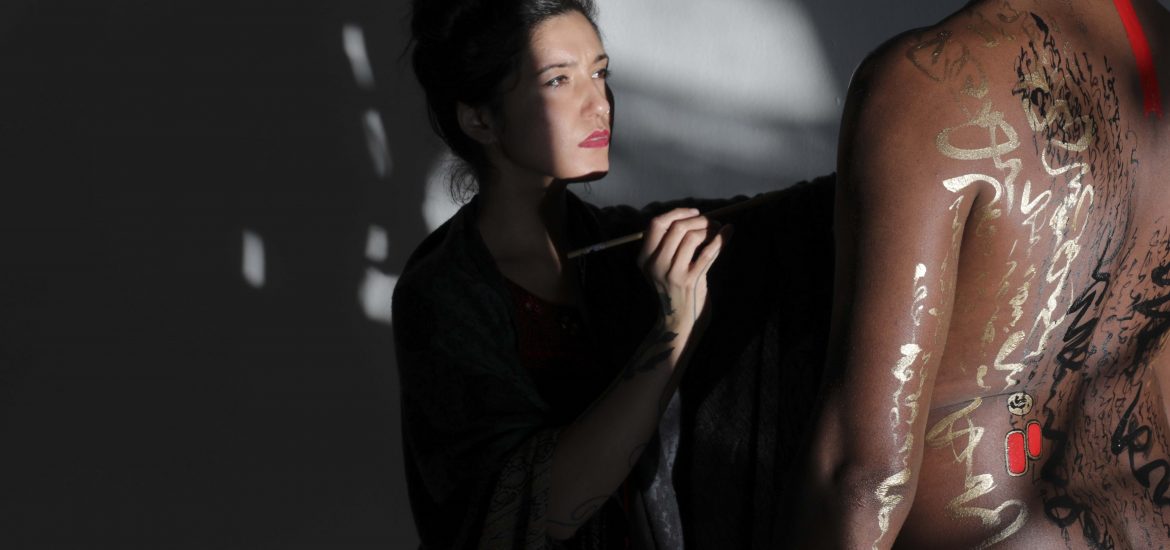In Brazil, in São Paulo state, right at its capital, also called São Paulo, is located an airy and confortable atelier, whose owner, Catarina Gushiken, produces an instantly recognizable aesthetic. These are striking calligraphic abstractions on naked human bodies of all shapes and sizes, ages, and genders. Blank ink, strewn across bare skin on Catarina’s own body or those of her muses and models, evokes a unique contemporary style of fusion art that unites the contemporary exploration of the human figure with Asian watercolour aesthetics.
Material, sensory, and corporeal: Catarina calls her style “Sensitive Calligraphy.” In our interview, she shares her preference for working with breathing bodies rather than paper: “The strength of this writing is precisely a subtle language that addresses issues of memories, ancestry, diversity, and plurality. I have always felt that calligraphing different bodies, their unique histories, and their multiple ancestries, give more light and strength to what we know as writing.”
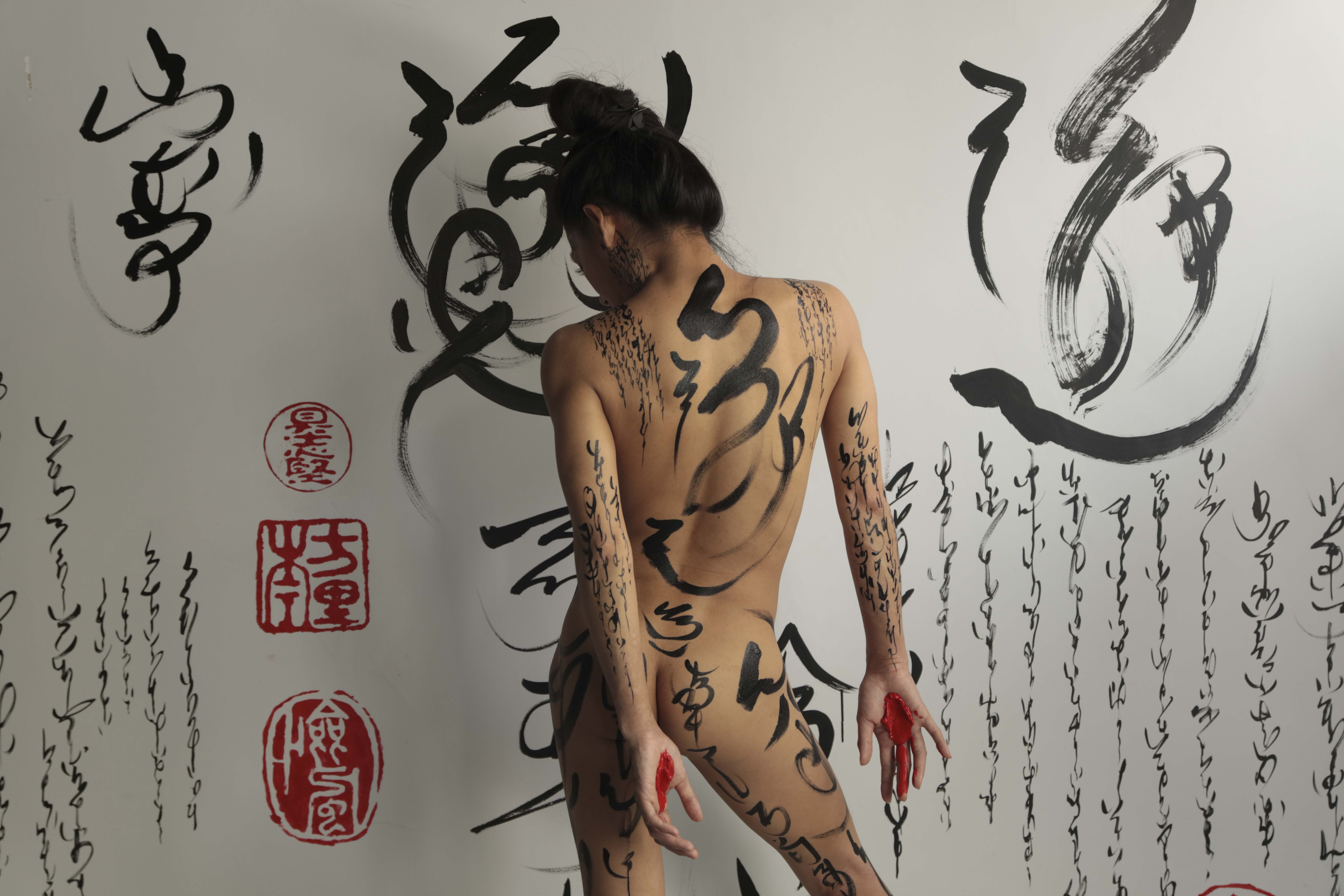
Catarina’s work speaks of an intimate archaeology, with diverse ancestral memories, and the more she weaves this network of subjectivities, the more abstract and silent the writing, the more it reveals our unique, mysterious, and profound origins. She is an artist with mestizo identity, with her mother being of Japanese descent and her father of Portuguese.
“My body is the body of a racialized woman, partially yellow, and with different layers,” she declares. Her Japanese side is further more enriched and complicated by the fact that her mother’s family was of Okinawan origin. She can therefore call herself an uchinanchu in Brazil, a country of different and diverse races.
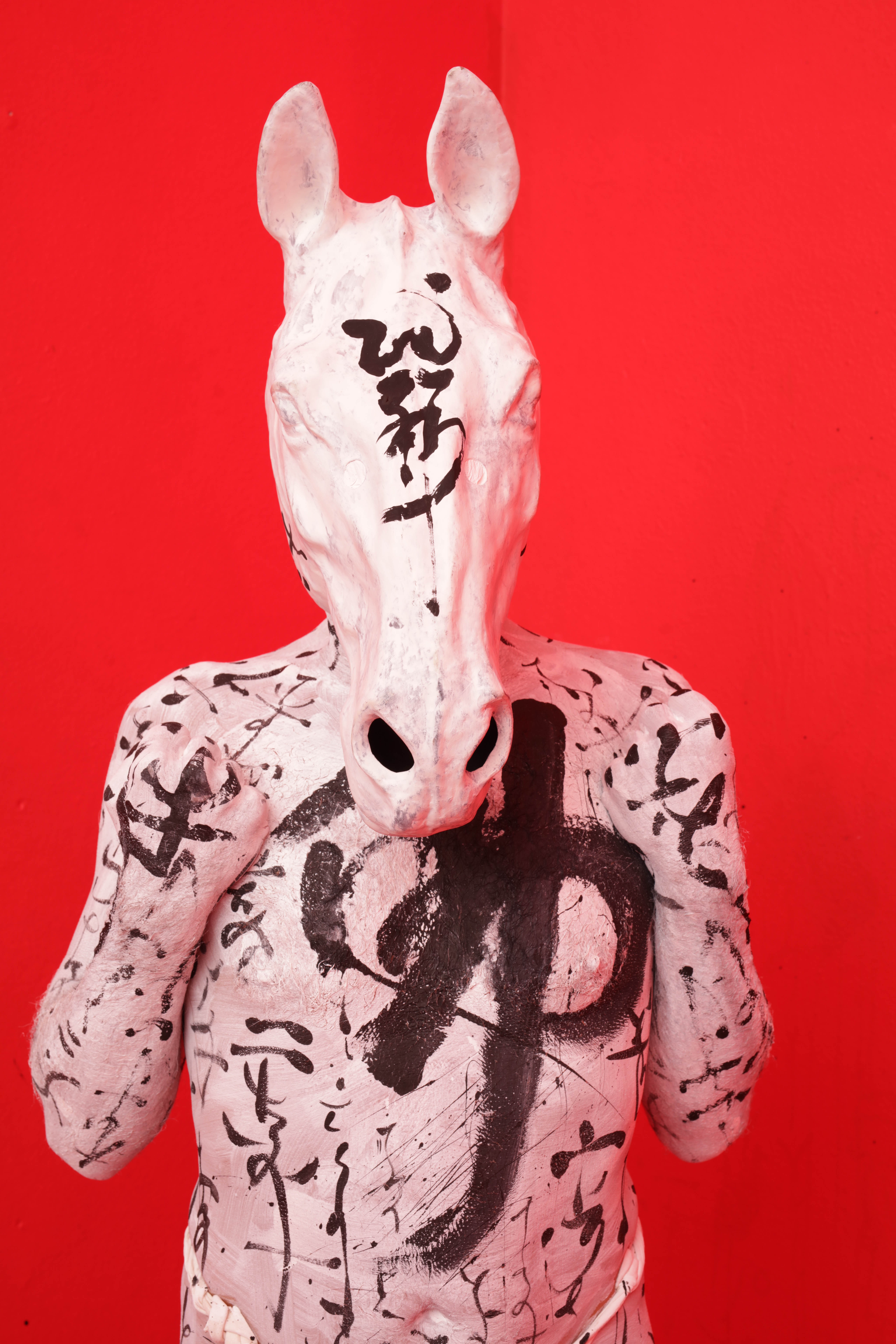
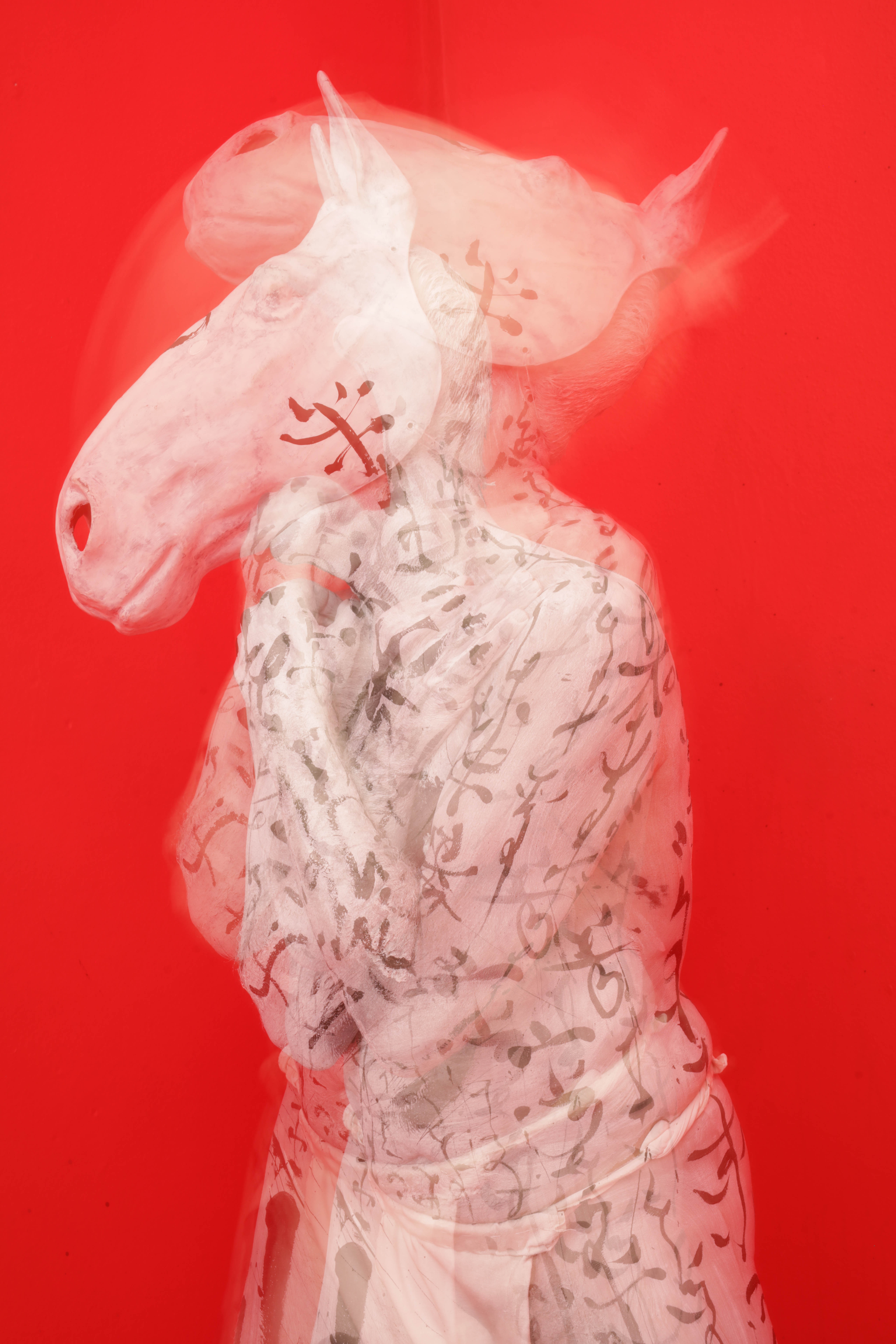
“My mother became pregnant at a very young age, at a time when she and my father still lacked financial stability. I was therefore very close to my grandparents, who were essential and very present in my upbringing,” she tells me. “While I did not learn Japanese, I was a keen observer of everything they did. I connected deeply with all the visual language of my grandfather’s writings, my grandmother’s dancing costumes, among other objects of art and music that were all over the house, as well as places that I used to see when they took me on outings.”
She credits them with not just being an emotionally nurturing and encouraging presence in her early life, but also influencing her interest in Japanese art. “I grew up watching my grandfather play the sanshin, and my grandmother the koto. I watched her dance in performances at the Okinawa Association of Brazil, and enjoyed seeing my grandfather write his beautiful Japanese calligraphy.”
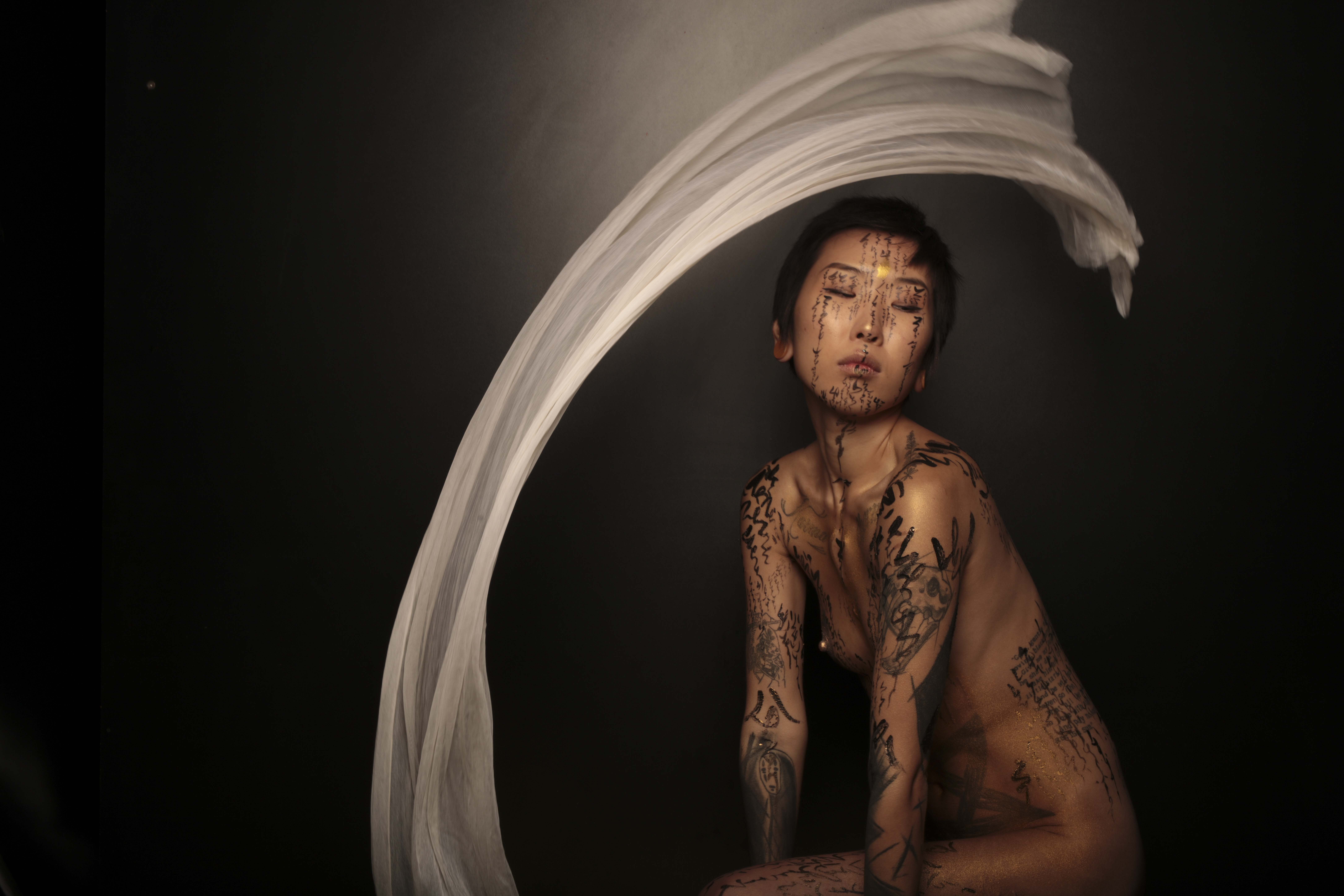
The calligraphic aspect was particularly significant for Catarina. She outlines two important milestones that directly fed into her artistic career. The first was her very first time writing Sensitive Calligraphy at the age of six or seven. She wrote her first words in Portuguese: babá (as she called her batchan), Catarina and Montanha, along with a landscape drawing of the mountains. Years later, in 2016, she went to Okinawa and had an intense experience of connection with her calligraphy’s cultural ancestry, as well as her physical ancestry on her mother’s side.
“My sense of aesthetic and all my subjectivity were formed in this kind of “between worlds” – my Japanese grandparents’ house, the diversity of worlds I found when I went to school, and my Portuguese grandparents’ house in another city far away. I believe that the foundation of who I am is that childhood in my grandparents’ house, so being in accord with my Asian ancestry was like returning to my spiritual home, it is like my refuge, in which I find strength, joy, and energy to live, allowing me communicate with different people and their lives through art.”


I asked her what she was currently working on. One of her top priorities is to visit China in 2024, which has spurred her on to complete a series of paintings called “Body Landscape” in time for next year. In this project, she video records testimonials and childhood memories in the moments that models print their naked bodies, painted with India ink, on large sheets of paper. “I continue to observe the impressions of the bodies, and work on them with layers of watercolors, bringing to the canvas a kind of mountain landscape from these forms.”
Mountains seem to be present in Catarina’s life. “It is very interesting that my mountain landscapes coincide with Chinese natural motifs. I have a deep connection with these Chinese paintings, and my bedside book is Notes on Painting by the Bitter Pumpkin Monk, a treatise on painting by Shitao (1642–1707), my all-time favorite painter.”
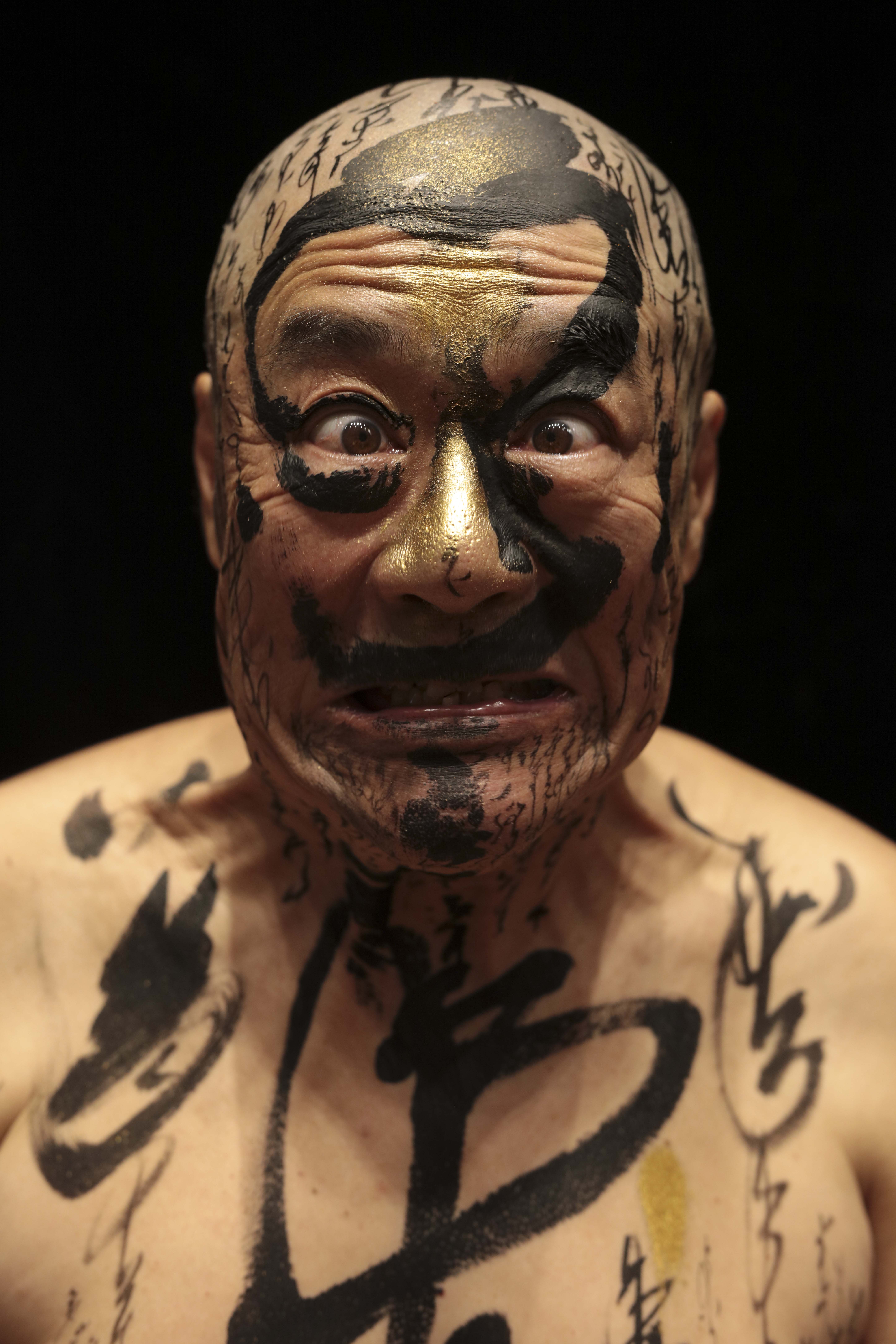

I follow Catarina on her popular social media channels, in particular Instagram. During the presidency of Jair Bolsonaro, she was fierce and outspoken about her political beliefs, from her support for Indigenous rights in her country to her disdain for Bolsonaro’s hard right populism. She supported veteran left-wing politician and former president Luiz Inácio Lula da Silva’s challenge to Bolsonaro, celebrating his victory in 2022.
“I deeply and sincerely support Lula and his platform of pro-environment and pro-indigenous policies. I also believe in racial and gender equality. I consider myself a feminist,” she says. “We need a political leader who understands all the layers that comprise Brazil, and who is committed to fighting inequality, racism, and all kinds of prejudice. What we went through during the four years of the previous government was a period of darkness. Lula certainly brought us hope. Today I heard a saying by Angela Davis on a podcast by Mano Brow, a very important musical artist here in Brazil. She said: ‘Freedom is not a destination; freedom is a journey.’ I believe that, and I have hope for a fairer Brazil.”



While it can be cliché to attribute someone’s politics to their multi-ethnic heritage or experience of cultural diversity, there is no doubt that Catarina’s deep connection to her maternal side, and her consciousness of the racial Other in a postcolonial Brazil, has influenced her. “After all, my mestizo identity affects the way I am read and how I read everything around me. I feel that my work is physically and emotionally in connection to the Other. I am always immersed in the pluralistic memories of different people across diverse layers of Brazilian society,” she declares.
One of the most profound memories that Catarina has had was her encounter and eventual friendship with artist Tamikuã Txihi. “Tamikuã is from the village of Guarani, which is located right here in Pico do Jaraguá, São Paulo. São Paulo is one of the biggest metropolises in the world, and Tamikuã truly shines as a face of Indigenous resistance. I would frequently go to Tamikuã’s house in Guarani Village, and we were able to discuss many cultural affinities between the Guarani and uchinanchu communities. I felt very honored by my Asian indigenous ancestry from Okinawa.”

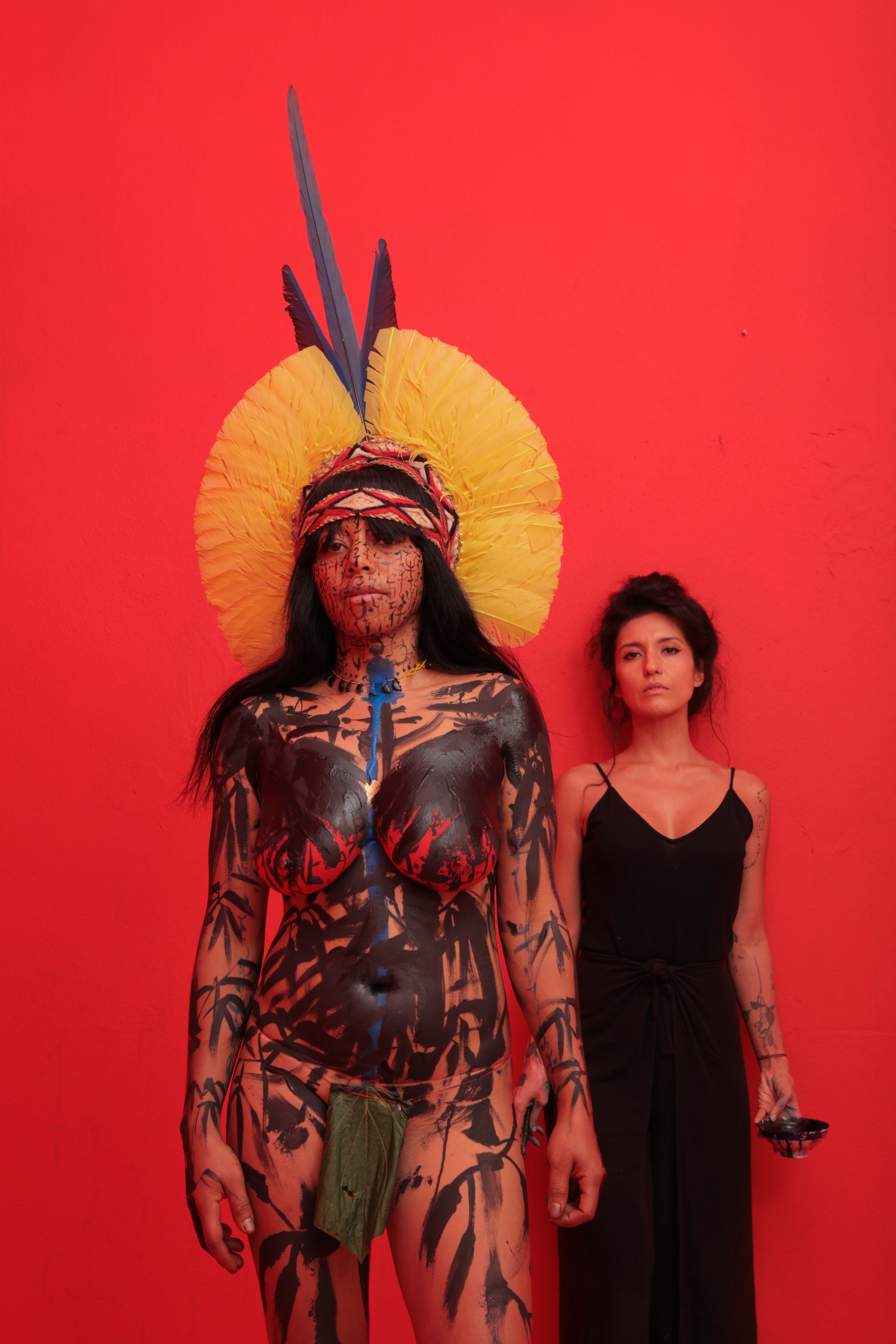
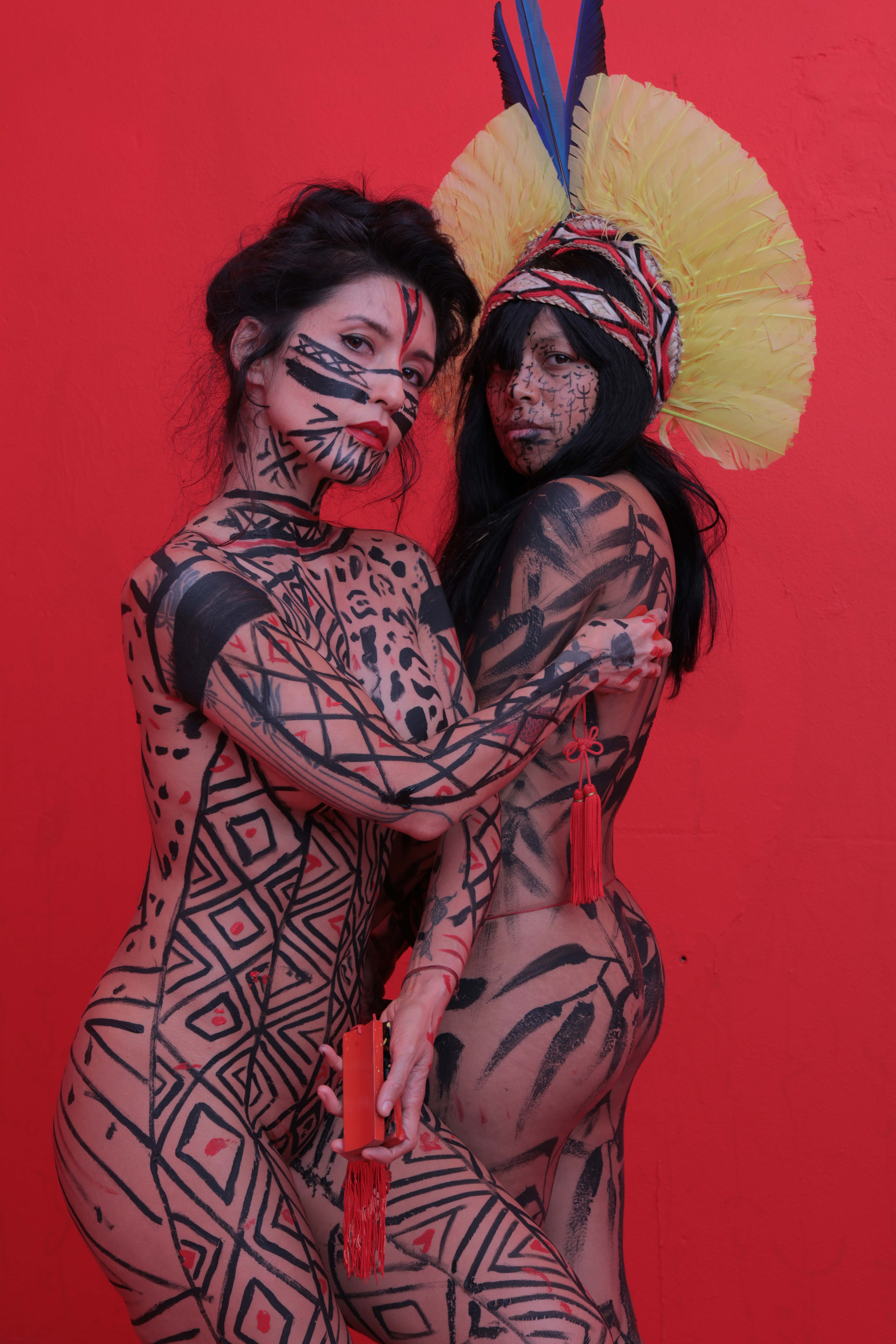
Catarina’s lifelong journey to find herself, through her Japanese and Okinawan connections and her karmic ties to Brazil and China, takes on a deeper light when she encounters the subjective Other, who she can mirror and mark with her art. “I try to be attentive enough to break out of my bubble, and be in places where I can have profound exchanges. I want to mirror things that would otherwise be dormant within me. Sincere exchanges with other beings from different worlds encourage me to seek a better ‘me,’” she says with deep feeling.
“My ‘selves’ intertwine with the ‘selves’ of the people I calligraph. This exquisite meeting is what stimulates me to produce art.”


